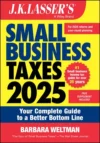Social Security and Medicare Changes for 2023
Seniors and others receiving Social Security benefits and Medicare health coverage have something to celebrate in the coming year. The approximately 65 million Social Security beneficiaries will receive a cost-of-living adjustment (COLA) of 8.7% starting with the December 2022 benefits, which are payable in January 2023. This is the largest COLA adjustment in more than 40 years (Social Security Administration Press Release and Fact Sheet, 10/13/22; https://www.ssa.gov/news/press/factsheets/colafacts2023.pdf).
Along with the 8.7% benefits COLA comes an increase in the maximum amount of earnings subject to the 6.2% Social Security tax. For 2023, earnings up to $160,200 are subject to the tax, up from $147,000 in 2022. This means that employees who earn wages of $160,200 or more in 2023 will have the maximum Social Security tax of $9,932.40 (6.2% x $160,200) withheld from their wages ($818.40 more than in 2022); the employer pays the same amount as the employee.
Self-employed individuals will figure their 2023 self-employment tax (Schedule SE) by applying the Social Security tax rate of 12.4% (6.2% employer share plus 6.2% employee share) to 92.35% of their first $160,200 of net earnings.
All wages, regardless of amount, are subject to the 1.45% Medicare tax withholding rate, and on Schedule SE, all self-employment net earnings (after the 7.65% reduction) are subject to the 2.9% Medicare tax (employer and employee shares). The $160,200 ceiling applies only to Social Security tax, not Medicare. In addition, employees and self-employed individuals with earned income over $200,000, or $250,000 if married filing jointly ($125,000 if married filing separately), must pay Additional Medicare Tax of 0.9%. The earnings thresholds for the Additional Medicare Tax are not subject to COLAs.
Social Security earnings limit. For benefit recipients who are under the full retirement age for all of 2023, benefits will be reduced by $1 for every $2 of earnings over $21,240 (it was $19,560 in 2022). For recipients who attain the full retirement age during 2023, benefits will be reduced by $1 for every $3 of earnings over $56,520 (it was $51,960 in 2022), but only the earnings in months prior to the month of attaining full retirement age are counted. There is no benefit reduction for earnings starting in the month that the full retirement age is reached.
A more favorable rule generally applies if 2023 is the first year of receiving benefits. If it is, and if the recipient will not reach the full retirement age until after 2023, there generally will be no benefit reduction for any month in which 2023 earnings do not exceed $1,770, or 1⁄12 of the full-year limit of $21,240. For those who reach full retirement age in 2023, there will be no benefit reduction for any month prior to the month of attaining the full retirement age and in which earnings do not exceed $4,710, or 1⁄12 of $56,520. However, the favorable “first year” rule does not apply for a month in which the recipient is self-employed and devotes either more than 45 hours to the business or between 15–45 hours in a highly skilled occupation. Keep in mind that if benefits are reduced because of the earnings limits, they are added back to the benefits received after reaching full retirement age.
Medicare premiums for Parts B and D. The Centers for Medicare & Medicaid announced premiums, deductible,s and coinsurance amounts for Medicare Parts A and B, as well as additional payments by high-income beneficiaries for Part D (https://www.cms.gov/newsroom/fact-sheets/2023-medicare-parts-b-premiums-and-deductibles-2023-medicare-part-d-income-related-monthly). The basic Part B monthly premiums is decreasing in 2023 to $164.90, down from $170.10 paid by more beneficiaries in 2022. The annual deductible for all Medicare Part B beneficiaries is also decreasing by $7 to $226. The modified adjusted gross income amounts from 2021 that are used to determine whether there will be an additional monthly cost to high-income beneficiaries for Parts B and D, however, have been increased due to inflation.
Percentage depletion
A deduction method that applies a fixed percentage to the gross income generated by mineral property.



